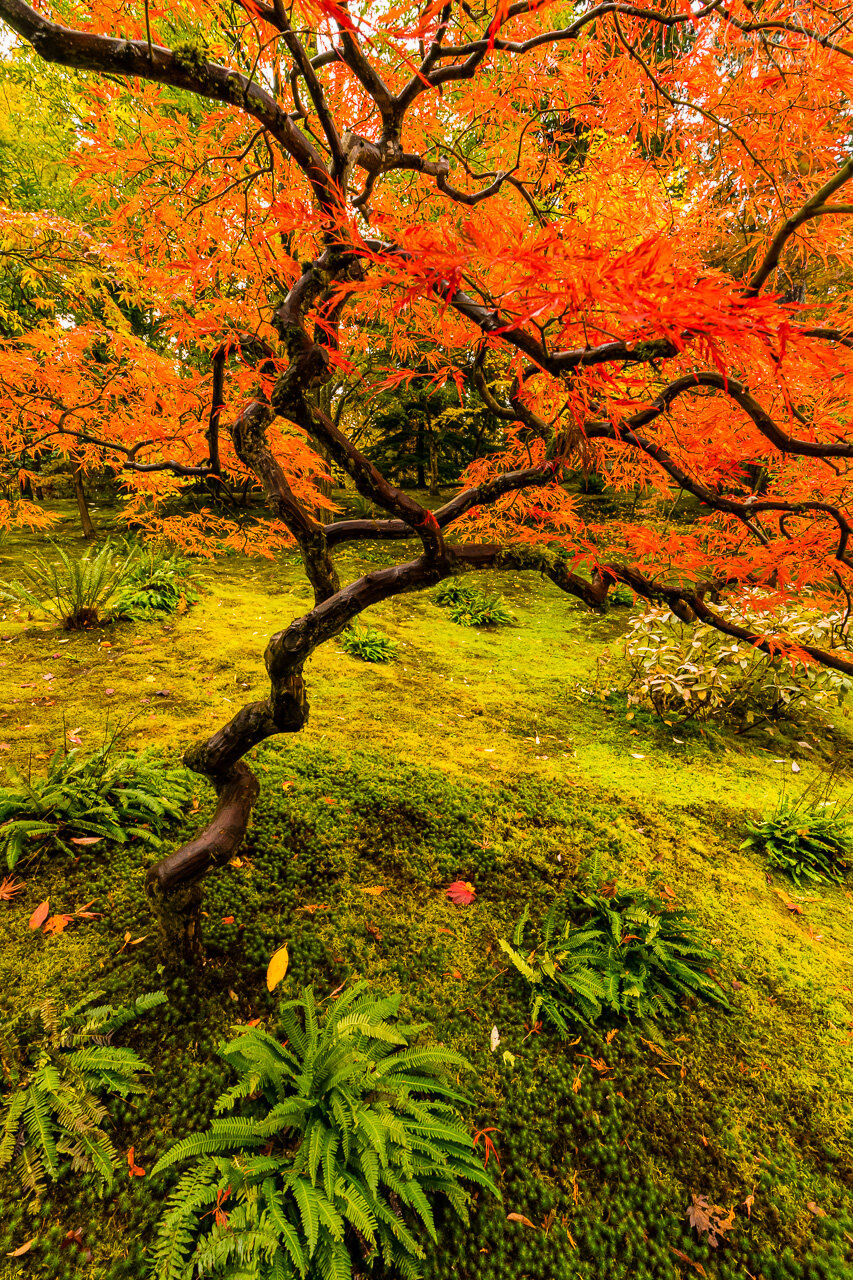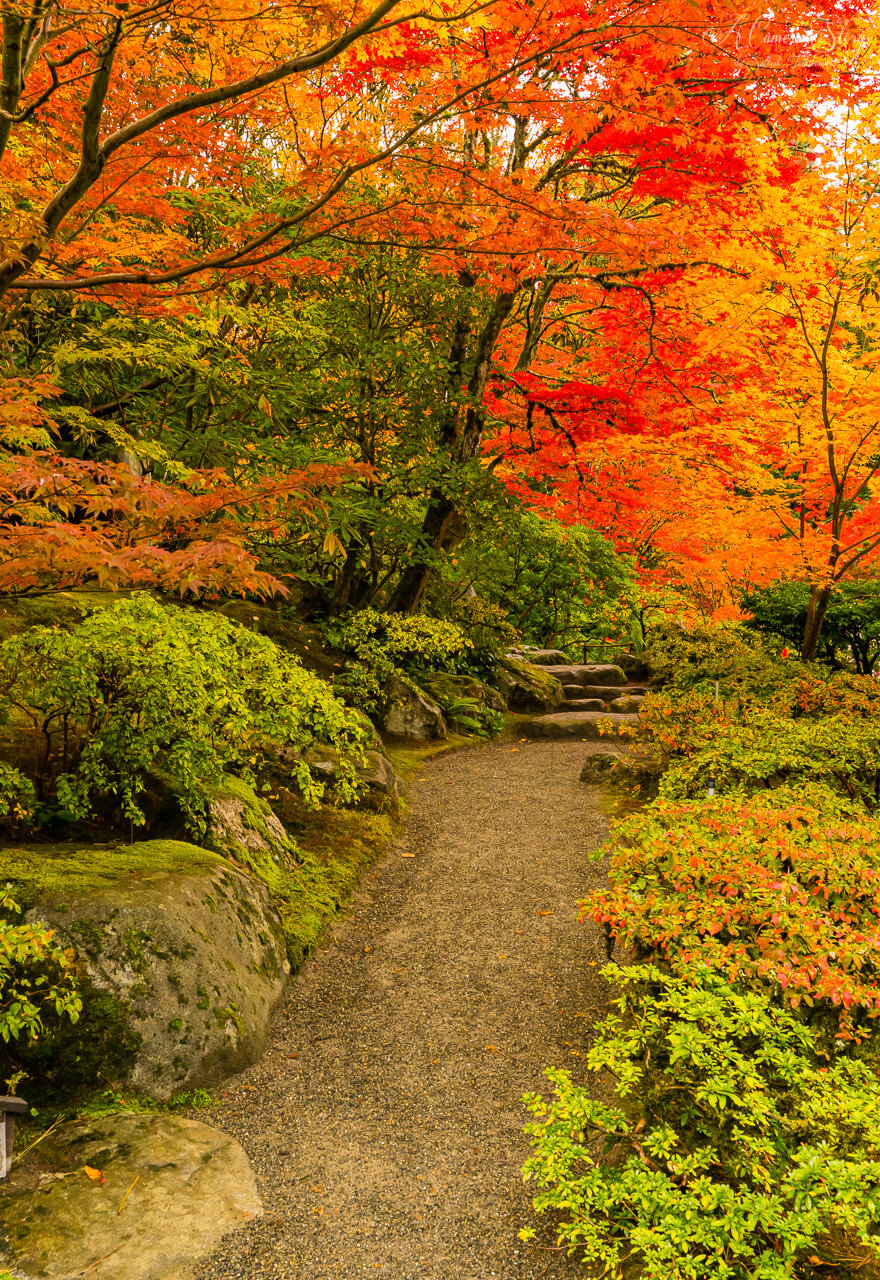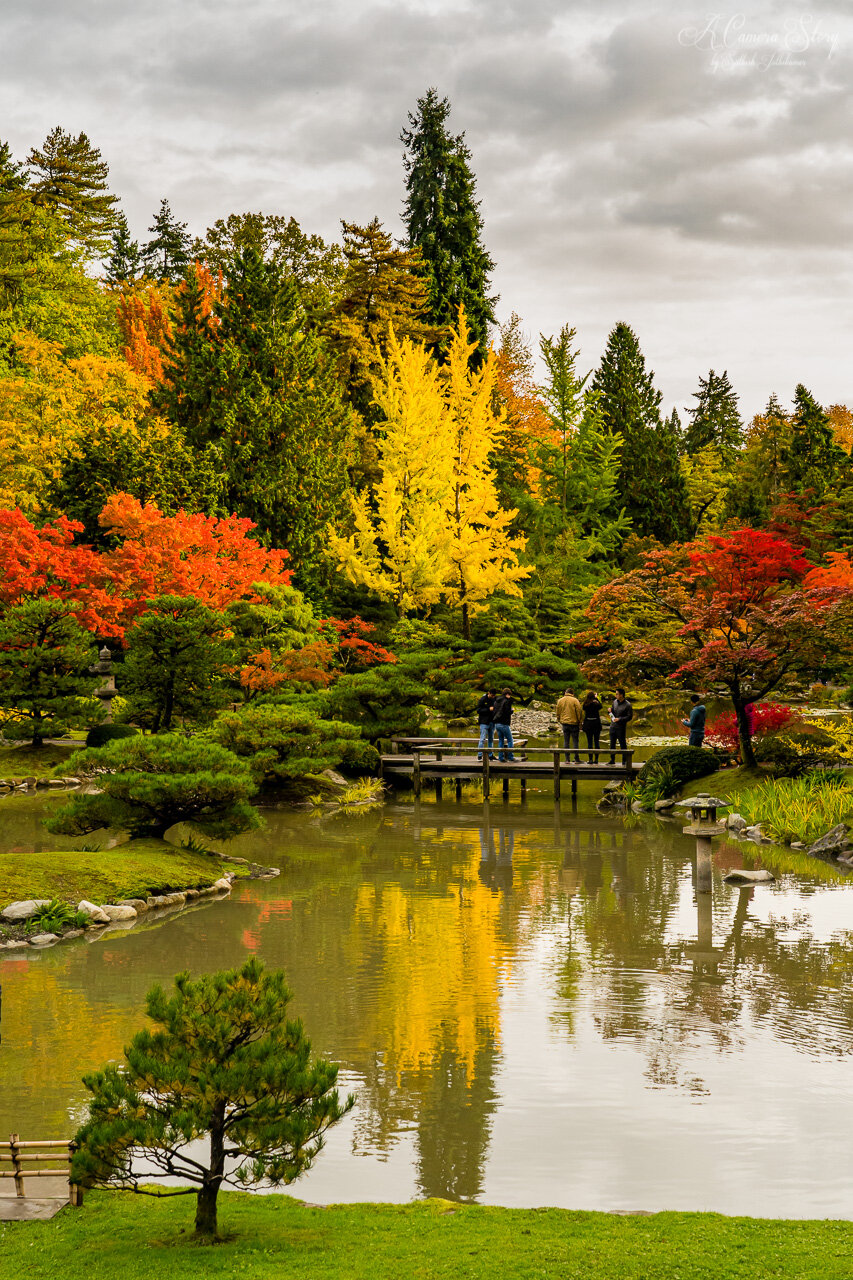The warm yellow hues of the late afternoon light, juxtaposed against the gentle shadows on the rolling terrain of the region, add the right bit of drama and depth to a scene that would been boring under the mid-day sun.
Here is one such composition where the light highlights the undulating terrain.
Palouse
WA USA
Rolling Hills of Palouse
As I was driving around the afternoon after a drifting thunderstorm, I found many of the classic pastoral scenes inspired by this region, such as the rolling green hills anchored by a lone cypress or a farmstead, of red barns framing green fields of wheat, of puffy white clouds marching endlessly into the horizon.
Here is one such scene from the byways that crisscross the Palouse region.
Palouse
WA USA
Horsetail Falls
Nestled in one of the lush green canyons lining the Columbia river gorge, this waterfall tumbles over an overhang of basalt columns. When I visited this place in spring, I saw the ribbon of white twisting its way through the lush undergrowth. The black walls of the canyon were adorned with fresh growth of mosses and lichens fed by the mist from the gushing falls. From this vantage point, I could spy the trail going under the overhang to give a unique perspective of the waterfall.
Columbia River Gorge
OR USA
Wilds of Alaska
I have always hiked in sanitized wilderness, an oxymoronic term referring to the fact that I have been treading on trails established long ago, following routes and maps that I scope out with the help of a convenient smartphone. I camp on surfaces that have seen tents established by many others, and see sunsets at locations seen by many others. This trip into Lake Clark National Park was the first time that I walked on a path that hadn't even been created, followed maps that gave no clarity on the route I was taking, drank water straight from snowmelt, and camped on places that hitherto hadn't seen a tents in years.
And along that journey, I bushwacked through dense thickets of willows, tumbled on tussock and scrambled up alpine slopes to seek out the next valley. It wasn't easy, but it gave a taste of a wild Alaska. I hope to return back someday to experience a full meal.
Lake Clark National Park
AK USA
A National Parks Journey - Mammoth Caves National Park
This park was initially just a short diversion on my roadtrip to the south from the midwest. I had heard of this park, and knew it was famous for featuring one of the longest caverns in the world. But from the outside, it was an unassuming park. Verdant forests and miles of wilderness belie the grandiose caverns hidden underneath. And being a short trip from two major population centers, this park garners plenty of crowds. Visiting the caverns thus requires a bit of advance preparation identifying the right tours to get tickets for.
But due to my impulsive travel planning, I only had a short time there, and in that time I got to explore a mere trifling of the park. Despite taking my camera, it couldn't do justice to the sheer diversity of caves with distinctive speleothemic formations, let along the enormity of the caverns inside that can hold a Boeing 737 jet inside. Instead, I just focused on immersing myself in the cavern life. This was one of the parks that really made me warm up to the idea of visiting and exploring more caverns.
This photo showcases the historic entrance to Mammoth Caves, which, until the elevators were installed in 1957, served as the main way to explore the caverns.
Mammoth Caves National Park
KY USA
A National Parks Journey - Cuyahoga Valley National Park
Typically, the parks established east of Rockies during the early days of the National Park System tended to be small urban parks, carved out from the desire to have scenic open spaces near to home, especially for recreation, rather than with the goal of preserving a unique slice of the landscape such as the Grand Canyon or Yellowstone. Cuyahoga was one such park of the former type, nestled between major urban areas, and its story is rooted in the environmental and social movements of the 20th century. Its creation is about not only providing a refuge from the urban wilderness but restoring a landscape to be culturally vibrant, less polluted, a better home for wildlife, and a model for sustainable living.
And that was why, even though it was an arms throw from urban areas, I found places of solitude. I had visited the park during the fall season, hoping to escape the maddening crowds of a major college campus I was studying at that time. During this season, this midwest park takes on a new color scheme, covered in golds and yellows. It also becomes remarkably quieter without the urban crowds. In wandering along numerous trails that meandered through the forests and old moss-covered rocks and stonework, I realized that it truly was a hidden gem that aspired to the goals for which the park was created
Cuyahoga Valley National Park
OH USA
Spring in the Skagit Valley
Every year, the blooming of the daffodils heralds the arrival of spring in Washington. Tiny bursts of yellow color dot the streets and villages of the Pacific Northwest, its characteristic trumpet and bell shape swaying in unison in the wind.
Out in the pastoral landscape of Skagit valley, vast fields of yellow daffodils carpet the landscape in early spring, ready to be picked and shipped to the neighborhood florist. Photos don't do justice to the scale of the farms that cover the area here.
I spotted this one out in the distance as I set out for a breath of fresh air and sunshine. The skeletons of the tall aspen, yet to regrow foliage for the year, towered over the carpet of yellow on this late evening.
Skagit Valley
WA USA
Underneath the Bonsai
The Autumn equinox heralds the arrival of Fall in the northern hemisphere, a season of crisp weather that transforms foliage from green to a vibrant orange, leading to perhaps one of the most beautiful synchronized show of colors in nature. Where I grew up, seasons like these didn't really exist; it was either hot and humid summers or a mildly warm winter. And hence, when I first encountered these autumnal colors (in the hilly Appalachians), I could not help but stare in wonder at it.
Since then, I look forward to fall every year. Despite the fact that it heralds the upcoming dreary winter (in the Pacific Northwest), I try to make the most of the short time when nature puts out her best colors. One such place where I seek these colors out are the Japanese Gardens in the PNW. The combination of the beautiful aesthetics, along with a microclimate that mirrors Japan, these gardens are a visual spectacle in autumn. This composition reflects the contorted trunk of a dwarf Japanese maple tree that attracts thousands to the Portland Japanese Gardens
Portland
OR USA
Hidden Delights
“There is a waterfall in every dream. Cool and crystal clear, it falls gently on the sleeper, cleansing the mind and soothing the soul.”
Few things bring mind to peace as hearing the sound of a gurgling creek gushing out onto a roaring waterfall. And on a hot day, the gentle cold sprays carried in waves by the wind is mana from the heavens.
This one was no exception, where a seemingly nondescript creek plunges through a deep ravine in the thick forested slopes of the Columbia Gorge.
Columbia River Gorge
WA USA
A fall in Japan



The art of stone in a Japanese garden is that of placement. Its ideal does not deviate from that of nature.
Every blade of grass, every branch of a tree, every stone lantern, and every curve of the pond, planned and placed ever so carefully to create a beautiful harmony of light, color and nature. After having experienced it extensively in Japan, I was delighted by the nostalgic memories a visit to Seattle's Japanese garden brought me.
And to witness the fall color diorama was a special treat.
Seattle Japanese Garden
WA USA



